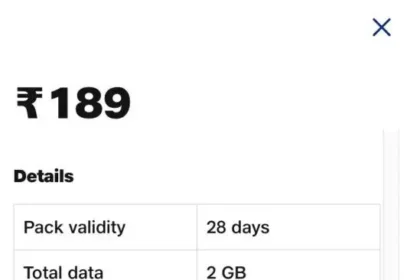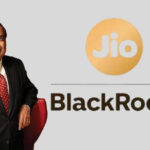Introduction
India’s digital revolution has made giant leaps in the last decade, fueled primarily by low-cost smartphones, ubiquitous 4G/5G availability, and a surging need for high-speed internet. By 2025, broadband will be necessary, whether working from home, watching best OTT series on platform, online learning, or controlling smart homes. This transformation has turned internet service providers into mere data carriers to full-fledged digital lifestyle enablers.
Out of the numerous ISPs present today. The most prominent and reliable names in the Indian broadband industry. JioFiber vs Airtel Xstream provide competitive rates, high-speed plans, bundled OTT offers, and enticing installation deals. However, the decision between them is not always easy.

That’s because their plans might appear similar at first glance. Still, they vary significantly in terms of network speeds, quality of jio customer support, control of the router, and consistency of real-world speeds. And these variations can dramatically affect your internet experience based on your requirements.
So if you’ve been curious about which is best for online gaming, streaming, remote work, or family usage, you’re at the right place. We’ll compare JioFiber and Airtel Xstream in all the key areas—price, speed, uptime, support, and features—so that you can choose which broadband best suits you in 2025.
Pricing & Plan Comparison
On broadband, pricing is among the very first concerns for the users.
JioFiber Plans: Budget-Friendly and OTT-Friendly
JioFiber broadband plans start at ₹399/month and top out at ₹3,999/month, with a range of speeds and OTT content bundles available. The plans have unlimited data (FUP of about 3.3 TB), free calls, and bundled smart device options on higher plans.
Typical JioFiber plans (Prepaid):
- ₹399/month – 30 Mbps (no OTT)
- ₹699/month – 100 Mbps (no OTT)
- ₹999/month – 150 Mbps + 15 OTT apps
- ₹1,499/month – 300 Mbps + Netflix, Prime Video, Disney+ Hotstar
- ₹2,499/month – 500 Mbps + Full OTT bundle
- ₹3,999/month – 1 Gbps + 15+ OTT apps + Jio Set-Top Box
Jio’s plan strategy is tailored to welcome first-time broadband customers and families who desire an entertainment coupled requires the Best JioFiber Plan for Your Home in 2025. with high internet speed.
Airtel Xstream Fiber Plans: Slightly Premium but Feature-Rich
Airtel’s plans begin at ₹499/month and go up to ₹3,999/month with greater base speeds and more affluent OTT integrations, even at the mid-range levels. Customers also get benefits such as Airtel Xstream Box, live TV, and multi-streaming platform access.
Best-selling Airtel Xstream plans:
- ₹499/month – 40 Mbps (no OTT)
- ₹799/month – 100 Mbps + Airtel Xstream app
- ₹999/month – 200 Mbps + Amazon Prime, Disney+, SonyLIV, Airtel Xstream app
- ₹1,498/month – 300 Mbps + OTT bundle + Xstream Box
- ₹3,999/month – 1 Gbps + full premium OTT access
Airtel is a digital lifestyle brand emphasizing speed, content, and ecosystem services in a single package.
Value for Money – Cost Per Mbps Comparison
To understand the real value, it helps to look at the cost per Mbps:
| Plan Speed | Jio Price | Airtel Price | Cost Comparison |
| 100 Mbps | ₹699 | ₹799 | Jio is lower |
| 150 Mbps | ₹999 | — | Jio exclusive |
| 200 Mbps | — | ₹999 | Airtel exclusive |
| 300 Mbps | ₹1,499 | ₹1,498 | Almost equal |
| 1 Gbps | ₹3,999 | ₹3,999 | Equal pricing |
At the entry and mid-level levels, Jio provides additional Mbps per rupee, and Airtel delivers wider OTT value on a comparable price band.
Prepaid vs Postpaid Flexibility
JioFiber only adopts a prepaid model with an initial payment and no long-term commitment. That appeals to students, tenants, and plan flexibility-loving user and Best JioFiber Plan for Your Home in 2025
Airtel Xstream Fiber has both postpaid and prepaid plans. One can bill monthly or by advance payment. Airtel also offers mobile, DTH, and broadband combo plans for enhanced value.
Internet Speed & Performance of JioFiber vs Airtel Xstream
While broadband packages typically advertise high speeds, the actual value is in how reliably those speeds are provided. To people who stream, work from home, play video games online, or download large files, real-world performance—rather than just promised figures—is essential.
Real-World Speed vs Advertised
JioFiber and Airtel Xstream Fiber both have plans from entry-level to gigabit-level speeds. Real-world customer experiences, however, tend to differ based on geography, network usage, and time of day.
JioFiber:
- On a 100 Mbps plan, customers typically receive 85–91 Mbps during daylight usage.
- The speed can reach 70–80 Mbps in the evening peak hours in heavy-density areas.
- Upload speeds generally range between 78–83 Mbps, which is more than enough for cloud storage and video conferencing.
Ideal Usage Based on Speed & Stability
| Usage Scenario | JioFiber Performance | Airtel Xstream Fiber Performance |
| 4K Video Streaming | Smooth on 100 Mbps+ | Smooth even at 100 Mbps |
| Online Gaming | Playable; may face occasional lag | Low latency, stable connections |
| Work From Home | Reliable with minor fluctuations | Highly stable, good for video calls |
| File Downloads | Fast but may dip at peak hours | Consistent download speeds |
| Video Conferencing | Generally stable | Very stable, minimal frame drops |
Reliability & Uptime
JioFiber:
- Downtime is rare, typically taking 1–4 hours when it does happen.
- The majority of outages reported are fixed the same day, particularly in metropolitan areas.
Airtel Xstream Fiber:
The company’s network monitoring and automated system frequently resolves issues before users know they exist.
Evening Speed Drops
- Congestion online in peak evening slots (7 – 11 PM) is typical in most Indian cities.
- JioFiber can suffer from speed falls during these times in high-traffic areas. For instance, users on a 100 Mbps plan can experience speeds falling to 60–75 Mbps, particularly in apartment buildings or congested neighborhoods.
- Airtel Xstream tends to be more stable in the evenings, with users generally clocking speeds over 85 Mbps even with several devices online.
Local Area Performance (User Feedback)
Delhi NCR:
- Jio: “Generally stable, occasional speed drops after 9 PM.”
- Airtel: “Flawless even when six devices are streaming together.”
Bhubaneswar (Reddit):
- Jio: “Seldom down… if it is, it is fixed within 4–5 hours.”
- Airtel: “Fewer speed fluctuations, but overall less downtime.”
Ahmedabad:
- Jio: “Good for OTT, but occasional packet loss at night.”
- Airtel: “Great for gaming and working from home.”
Bangalore & Mumbai:
Both networks are excellent in central cities, although Airtel’s reliability works in its favor in some high-traffic spots.
Customer Service & Support
Solid customer care can be the difference-maker when something happens, regardless of how quickly or cheap a broadband service is.
Setup and Installation Experience
JioFiber:
- Installation is typically quick and smooth in cities. Once an order is placed, most users have their connection up in 24–48 hours.
- The installation involves provisioning a router and, for applicable plans, a Jio Set-Top Box.
- Delays in installations of 3–5 days in Tier-2 or Tier-3 cities have been noted, sometimes because of the availability of technicians.
- Some customers have noted the upselling of add-ons such as smart home packs during installation.
- Complaints are resolved with technician visits or calls back within 2–4 hours, and some report proactive SMS/email updates on issue status.
Complaint Resolution Times
JioFiber
Minor problems, such as billing or simple connectivity, are settled within one working day.
Airtel Xstream:
- Resolution is generally faster, particularly for software-related issues.
- On-site support is usually sent within 24 hours for recurring issues.
User forums and Reddit posts usually attribute Airtel’s quicker solutioning and more skilled technicians, particularly for problems involving escalation or physical inspection.
Router & Network Control
To technophiles, gamers, and smart home owners, broadband is about speed and controlling your network setup. Whether personalizing router configurations, linking smart devices, or activating VPNs and remote access, network configuration flexibility can make or break the experience.
JioFiber Router Restrictions
- No access to full-featured router settings (such as NAT type, port forwarding, or DNS customization).
- Bridge mode is not enabled, i.e., you can’t completely bypass the Jio router and use your third-party router as the primary gateway.
- VPN passthrough support and restrictions have been reported by some users when attempting to host game servers or remote desktops.
- Jio’s network employs CGNAT (Carrier-Grade NAT), which may limit direct connectivity to your public IP, impacting services such as CCTV access or file sharing from home.
- These restrictions do not affect general browsing or streaming but may irritate heavy users.
How to pick the best Jiofiber Plan?
Airtel Bridge Mode Support
Airtel offers customers more control and freedom when configuring their home network. Its routers (Xstream Fiber modem + WiFi device) support advanced setup and enhanced third-party hardware compatibility.
Primary features are:
- Bridge Mode Support: Enables you to connect your router of choice (e.g., TP-Link, ASUS, Netgear) to manage all the network traffic and complex routing functions.
- Full Admin Access: Users can log in to the router interface to change settings such as DHCP, DNS, port forwarding, parental control, and more.
- Public IP Availability: Airtel provides a more reliable public IP, simplifying remote access configurations or VPN configurations.
- This makes Airtel better for users who need to tailor their network or require greater features for work, gaming, or smart home use.
Use-Case Scenarios
| User Type | JioFiber | Airtel Xstream Fiber |
| Gamers | NAT issues, limited control | Lower ping, open NAT via bridge mode |
| Smart Home Users | Basic support, limited automation | Greater device control & stability |
| VPN Users | Some restrictions with passthrough | Strong support for custom VPNs |
| Remote Access (e.g., CCTV) | Not ideal due to CGNAT | Better with public IP configuration |
| Tech Enthusiasts | Limited tweaking possible | Full access to advanced settings |
OTT & Entertainment Bundles
In 2025, broadband is as much about entertainment quality as speed. This positions JioFiber and Airtel Xstream as viable options for binge-watchers looking to cut streaming expenses each month.
JioFiber: Netflix, Prime Video, Disney+ Hotstar & More
These are available on compatible devices through the Jio Set-Top Box or the MyJio app.
OTT platforms included (dependent upon plan):
- Netflix (Basic) – available from the ₹1,499 plan and above
- Amazon Prime Video – included from the ₹999 plan and above
- Disney+ Hotstar
- SonyLIV
- ZEE5
- Voot Select
- Alt Balaji
- JioCinema (Premium content)
- Discovery+, Eros Now, others
The ₹999 and onwards plans unlock 14–16 OTT apps, varying by the tier of the plan. The content is delivered using a single app interface on the Jio STB, making it easy to access without changing apps or subscriptions.
Airtel Xstream: Disney+, SonyLIV, Xstream App & More
Airtel Xstream Fiber also provides a rich OTT experience, particularly from its ₹999 plan and above. It uses its Xstream Android TV Box and Airtel Xstream App to deliver live TV and premium OTT content in one location.
OTT services included (plan-wise):
- Amazon Prime Video
- Disney+ Hotstar
- SonyLIV
- LIONSGATE Play
- Eros Now
- Hoichoi
- ManoramaMAX, and others
- 350+ live TV channels through Airtel Xstream
The Xstream Box converts your regular TV into a smart hybrid TV, providing a mix of live channels, OTT content, and Google Play apps. It allows you to manage subscriptions across devices.
Which Is Better for Binge-Watchers?
Both operators provide great OTT value, but their content bias is marginally different:
- JioFiber has Netflix, a big plus for users who want global content, movies, and premium originals.
- Airtel Xstream has additional regional OTT platforms and a good balance of Hindi and South Indian content. It also supports live TV, which will be helpful for those who want to substitute the conventional DTH offerings.
- For content diversity, JioFiber might attract international entertainment enthusiasts more, whereas Airtel Xstream is fit for customers who prefer live TV, regional films, and family content.
Smart Home & Value-Added Features
JioFiber Smart Home Ecosystem
- Provides integration with Jio Smart Home devices: smart camera, door sensor, smart plug, etc.
- Features JioHome App to control devices and WiFi settings.
- Some plans include a free Jio 4K Set-Top Box and a home gateway router.
- In-house focus, ideal for early adopters of smart homes.
Airtel Xstream Add-ons
- It comes pre-loaded with the Xstream Android TV Box, a hybrid smart DTH box.
- Alexa Voice Remote for smart TV control and voice assistance.
Value-added services:
- Apollo 24/7 doctor consultation
- Wynk Music Premium
- Airtel Thanks rewards
More third-party smart device and app compatibility (Google ecosystem).
Installation Charges & Hidden Costs
JioFiber
- Installation Charges: ₹1,000 (waived on 3/6/12-month plans).
- Security Deposit (for STB): ₹1,500 (refundable if device returned undamaged).
- Some users complain about upselling during installation (e.g., smart home kits).
Airtel Xstream Fiber
- Installation Fee: ₹1,000 (usually waived on advance payment plans).
- Xstream Box Deposit: ₹1,500–₹2,000 based on plan.
- Simple combo offers with mobile/DTH plans for bundling.
Which One Should You Choose?
For Budget Users
- JioFiber: Most affordable 30 Mbps plan at ₹399/month.
- OTT bundle starts earlier (₹999) with more bundled apps.
For Streamers & Binge-Watchers
- JioFiber: Covers Netflix, Prime, Hotstar from ₹999–₹1,499 plans.
- Airtel Xstream: Suitable for regional + live TV experience.
For Gamers
- Airtel Xstream: Lower ping, bridge mode, public IP support.
- Jio has NAT and port forwarding restrictions.
For Large Families
- JioFiber: Extra data (3.3TB), STB + OTT bundle is family-oriented.
- Airtel: Consistent speeds for more users & improved smart TV experience.
For Power Users / Small Businesses
- Airtel Xstream: Suitable for customized router configurations, VPN, and remote access.
- Priority support for postpaid and business users.
Conclusion
Selecting between JioFiber and Airtel Xstream Fiber in 2025 is the most important thing to you—cost, performance, entertainment, or tech flexibility. JioFiber is perfect for price-savvy users, OTT enthusiasts (thanks to Netflix & Prime bundles), and families requiring all-in-one entertainment.
Airtel Xstream Fiber suits gamers, smart home users, and professionals needing steady speeds, low latency, and network control customization.
Both brands are trustworthy, countrywide ISPs with millions of happy users. The secret is to match your plan selection with your lifestyle, content requirements, and tech demands.
FAQs
- Which one is less expensive: JioFiber or Airtel Xstream?
Jio begins at ₹399/month; Airtel’s starting plan is ₹499.
- Which one provides better OTT apps along with the plan?
Jio provides Netflix, Prime Video, and Hotstar in its ₹999+ plans; Airtel provides Disney+, SonyLIV, and additional regional content.
- Which one is best suited for online gaming?
Airtel Xstream provides lower ping, bridge mode, and NAT control, which gamers favor.
- Do both operators support smart TVs?
Yes. Both have Android TV boxes supporting popular streaming apps.
- Can I use my WiFi router?
Jio limits this; Airtel supports bridge mode and complete router customization.
- Which has better uptime and fewer outages?
Airtel is marginally more stable, particularly in Tier-1 and Tier-2 cities.
- Is installation free with Airtel or Jio?
Generally free if you prepay for 3 or 6 months. Otherwise, a ₹1,000 regular charge applies.
- Which broadband is better for rural or semi-urban locations?
Jio’s fiber reach is better, but Airtel’s service can be quicker.
- Are mobile or TV the only devices with OTT apps?
You can use the OTT subscription on mobile, laptop, or TV (app login).
- Which operator is suitable for work from home?
Airtel provides more stable speeds and lower latency—incredible for video calls and large file transfers.







